If you use a Thrive Theme Builder Theme, you have the possibility to create templates specifically suited for the custom post types you have on your website.
After you set up custom post types, with the Custom Post Types UI plugin for example, automatically generated archive pages will be assigned for them, in the back-end of your website. This is where Thrive Theme Builder comes in.
Once the custom post types are all set, you can create and customize specific “List Templates” for each of them, which will then be applied to their automatically generated archive pages.
Follow these steps to create those specific templates:
1. Access the Templates section
To be able to create a new template, you have to access the “Templates” section of the Thrive Theme Builder dashboard.
To do that, in your WordPress admin dashboard, hover over the “Thrive dashboard” item from the left-side menu, and then click on “Thrive Theme Builder” from the sub-menu that opens:
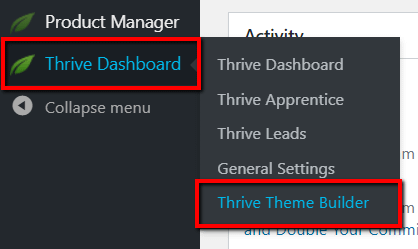
If you have completed your Site Wizard already, then you will be taken to the “Templates” section directly. If not, then look for the “Templates” section, from the left side, and click on it to open it:

2. Add the specific template
Once you accessed the “Templates” section, click on the “Add New” button, from its upper-right corner:

A pop-up window will open where you can set up and add the new template for the custom post type, as follows:
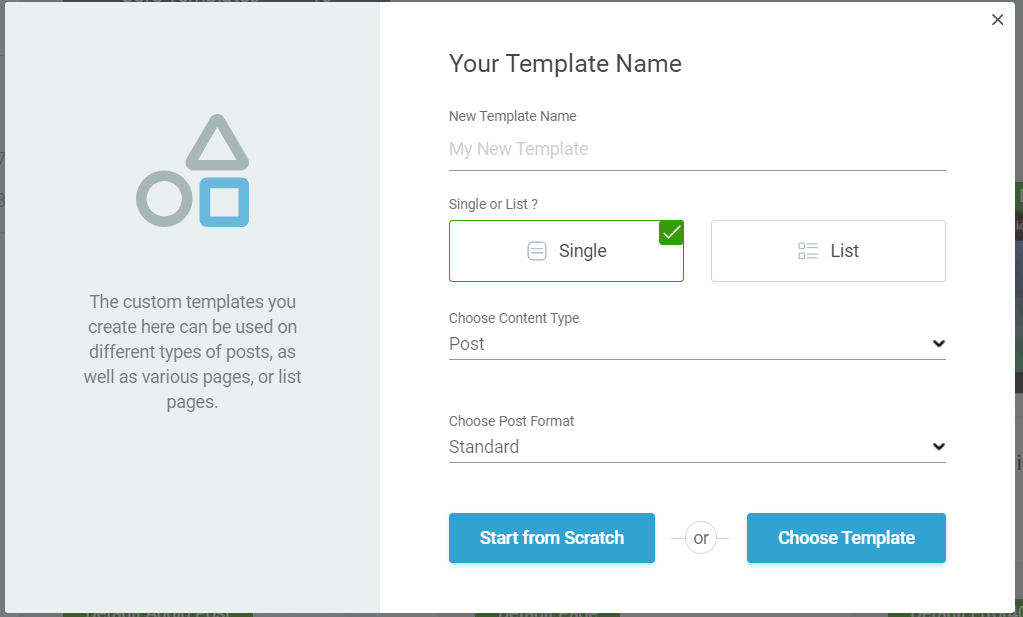
Add name
First, add the name you want for the new template in the field below “New Template Name”:

Choose Type
Then, you will have to choose between the “Single” and the “List” type for your new template.
Select the “List” type here, because you want to create a template for the list page (archive) that is automatically generated for your custom post type:

After you select the “List” template type, specific setup options for it appear below the “Single or List?” section in the pop-up window.
Choose List Type
Next, you have to select the List Type for the “List Template” you want to create. For that, click on the little down arrow (or the field with the current List Type) from the “List Type” section:

Then, since you want to create the template for a custom post type, make sure the “Post Types” is selected in the drop-down that opens:
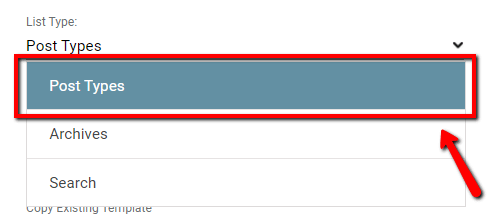
Choose Archive Type
The next step is where you can actually choose your custom post type for the new template. Click on the little down arrow (or the field with the current Archive Type) from the “Archive Type” section:

A drop-down list will appear containing the default post types (like the Post and Page types), as well as the custom post types that are set on your website. Select the custom post type you want to create this template for, by clicking on it.
In my example, I am creating a template for the “Recipes” custom post type that is set up on my website:
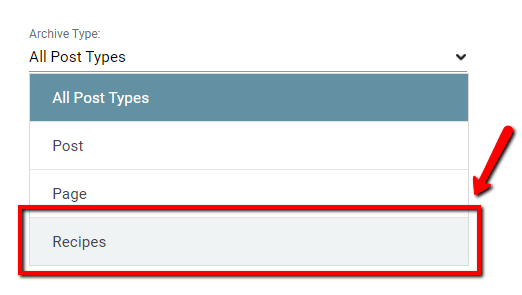
Start from Scratch
Next, you can choose whether you want to build the design for this template from scratch and customize it entirely by yourself:

Choose Template
Or you can also use a predefined template, from the template library:

This will open the library with all the available templates:
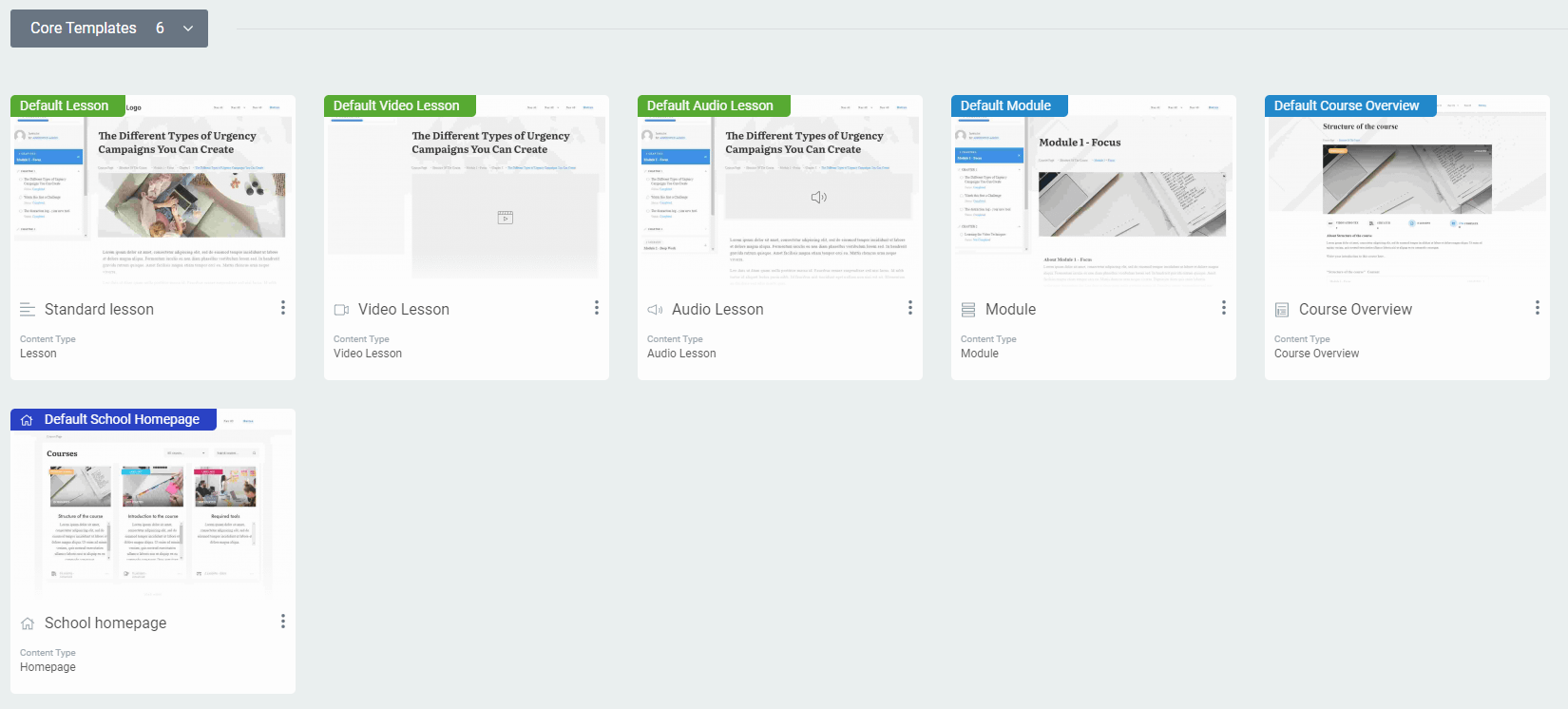
You can use the filtering options from the left-hand side of the screen to browse through all the available designs:
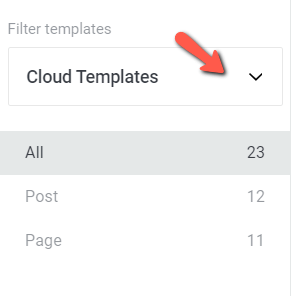
After doing all this, you will be able to see the template in your “List Templates”, as the default one that will be used for the page that is automatically generated for any custom post type:

3. Customize the template to fit the custom post type
After you have created the new template, you can start customizing it, in order to be suitable for the custom post type you have created it for. To do that you will have to edit the new template. Hover over it and click on the “Edit” option that appeared:
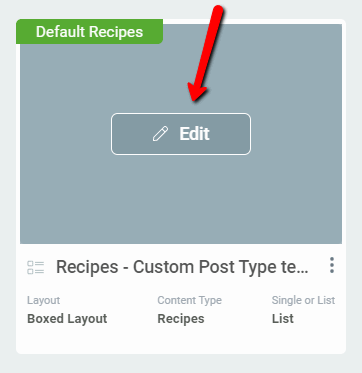
Then, the Thrive Theme builder editor will open and you can edit/customize the template the same way you would edit any other template. If you need details on how to do that, check out this tutorial.
Note: With regular templates, you usually have to apply the template to a page/post after you finish customizing it. However, this is not the case with the templates you create for your custom post types.
Since the custom post types have automatically generated pages assigned to them, you do not need to apply the templates created for them to any page. They will be applied by default to these automatically generated pages.
This was the way in which you can create a specific template for one of your custom post types. You can repeat this process to create separate templates for each of the custom post types you have set up on your website.
You can even create more templates for the same custom post type if you want to try out more designs for it. Just keep in mind that out of these, the template that has the “Default” label, will be the one used for the respective custom post type.
It is also good to know that you can set any of the templates to be the default one, using its “Managing Options”, as described here.
If you want to find out more about Thrive Theme Builder templates, options & elements, check out our knowledge base section about them here.
Hopefully, this article was useful for you. If so, please reward it with a smile below 🙂